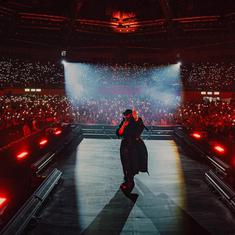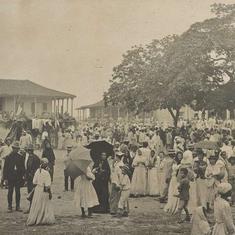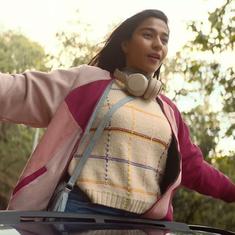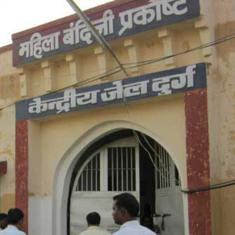The 50th anniversary of the promulgation of the Emergency falls later this month. I have written about that dark period in our history in my book, India after Gandhi. I may also direct the interested reader to books on the subject by, among other scholars, Emma Tarlo, Gyan Prakash, Christophe Jaffrelot and Pratinav Anil and, most recently, Sugata Srinivasaraju.
In this column, however, I wish to share some personal memories of how, as a young college student in Delhi, I experienced the Emergency at the time.
In May 1975, I completed my first year as an undergraduate at St Stephen’s College, and returned home to Dehradun for the holidays. The Emergency was proclaimed during the vacations. When I returned to the university campus in the third week of July, I wasn’t thinking much – if at all – of what Indira Gandhi’s incarceration of her opponents had to do with the present or future of my country.
This was because I was, at the age of 17, largely concerned with securing my place in my college’s cricket team. And my friends in St Stephen’s were likewise utterly non-political.
This indifference to politics was actively encouraged by the college administration. The elections for posts in the Delhi University Students Union were fiercely fought; but Stephanians were not allowed to vote. On the other hand, students in other colleges in the campus, such as Hindu, Hansraj, Ramjas and Kirori Mal, energetically participated in the DUSU elections. And even more active in politics were the students of the university sited at the other end of Delhi, named after Jawaharlal Nehru.
Judge Jagmohanlal Sinha of the city of Allahabad, India, rules that Prime Minister Indira Gandhi has used corrupt practices in Indian Parliament, and that she should be banned from holding any public office.
— 1975 Live (@50YearsAgoLive) June 12, 2025
Gandhi says that she refuses to resign. pic.twitter.com/1GC6dvmgFA
Stephanians make much of their institution’s connection to Mahatma Gandhi, whose closest friend, CF Andrews, taught at the college. However, although the college produced the odd freedom fighter (such as Har Dayal and Brij Krishna Chandiwala), its contribution to the national movement pales in comparison to that of colleges in Mumbai, Pune, Calcutta, Chennai, Varanasi, Allahabad, Patna and other places.
This disregard for politics persisted after Independence, when the brightest Stephanians were focused on joining the bureaucracy or the diplomatic corps. In the 1960s, a few Stephanians were briefly enchanted with Naxalism, yet they were an aberration. Their contemporaries aimed at prestigious government jobs, or became journalists, academics and corporate executives.
The St Stephen’s I knew had many attributes, but political engagement was not one of them. We lived for the moment, and what it gave us. I came back to the college in July 1975, after the summer vacation, to find it entirely unchanged. The detention of the Opposition leaders and the censorship of the press did not affect us one bit. We chatted and laughed and played as before.
My own focus in the latter half of 1975 was on developing a leg-cutter to go with my stock delivery, the off-break. Other Stephanians were likewise focused on their own particular passion; whether reading Shakespeare, playing bridge, listening to classical music, sourcing charas or whatever.
A memory of a winter’s day in 1975-76 will give a sense of how non-political we all were. A former student came to college to shoot a documentary film commissioned by state television. One student played a guitar on the steps of the Senior Common Room, while some others (myself included) stood around and heard him out with attention.
The completed film with that cameo intact was later shown on Doordarshan under a title whose exact wording I forget v but it was probably along the lines of ‘“Peace and Tranquility on the Campus”.
As the Emergency dragged on, some stories of its darker side carried over to us. We heard of the increasing influence of the prime minister’s son, Sanjay Gandhi, of his reliance on a senior policeman named PS Bhinder, of a police chase involving Bhinder and a Robin Hood-like figure named Sundar Daku.
Rahul Gandhi explaining the benefits of wealth redistribution and inheritance tax is akin to praising the Emergency after imposing it on the nation. Wait, wait... Sanjay Gandhi actually did that.
— Rishi (@RishiUvaach) May 7, 2024
Watch... pic.twitter.com/FJudmdKvy5
A much-loved teacher, Vijayan (Unni) Nair, was tapped by Sanjay Gandhi to join him. They had been classmates at the Doon School. Now Sanjay sent word through a common friend that Unni should give up lecturing in an undergraduate college and come help him “run the country”. Unni Nair, to his enormous credit, answered that he was perfectly content where he was.
Then there was a man we saw every day in the University Coffee House, with a brown beard and tinted glasses, sitting alone. He sat for hours, looking down ruminatively at his cup of coffee, looking up only to take a puff of his cigarette. We concluded that he must be an agent of the Intelligence Bureau, deputed to check on whether, in fact, peace and tranquility prevailed on the campus.
These occurrences slightly awakened the previously dormant political gene in me. So did some remarks made by a toady on All India Radio late one night in the second week of April 1976. A group of us were huddled around a transistor in one of the college quadrangles, listening to the commentary on the last day of a Test match being played against the West Indies in Port of Spain. The Indians were chasing a victory target in excess of 400, and quite improbably achieved it, powered along by centuries from our two Little Masters, SM Gavaskar and GR Viswanath.
After the winning run was scored, the commentator on AIR burst out, “Ye Indira Gandhi ka desh hai! Ye bis sutrikarikaram ka desh hai!” (This is the land of Indira Gandhi! This is the land of her Twenty Point Programme). Even at the time I found it grossly offensive, since the credit that properly accrued to our cricketers was being egregiously accorded to an authoritarian politician instead.
In the spring of 1977 the Emergency was lifted, and elections were announced. A new Janata Party was formed out of four existing parties opposed to Indira Gandhi and her Congress. There was a rally at Maurice Chowk, down the road from St Stephen’s, which I attended, along with thousands of other students.
We heard speeches from the socialist, Raj Narain, wearing a green bandana, fulminating against all Nehrus, dead, alive, and unborn; from Jawaharlal Nehru’s sister, Vijaya Lakshmi Pandit, as elegantly turned out as in her days of glory as our ambassador in Washington and Moscow, now come here from her retreat in Dehradun to demand the restoration of civil liberties and an end to her niece‘s autocracy; from several student leaders (none from my college); and from the Jana Sangh ideologue, Atal Bihari Vajpayee, in cultured and euphonious Hindi, wisecracks and witticisms aplenty.
That meeting in Maurice Chowk quickened my interest in the world outside cricket and in the world outside St Stephen’s. A few weeks later, when the elections were completed and the counting of votes had commenced, I went with a group of friends to Bahadur Shah Zafar Marg, which then housed the head offices of several major newspapers, published in Hindi as well as English.
The internet lay decades in the future and, of course, we could not rely on All India Radio or Doordarshan to give us up-to-date or reliable information.
We sat outside the row of newspaper offices, opposite a big blackboard that flashed the results as they came in. There was a loud cheer when we saw it being reported that Sanjay Gandhi had been defeated in Amethi, and an even louder cheer when the board further confirmed that Indira Gandhi had been defeated in Rai Bareilly.
Authoritarianism had been vanquished, and dynastic politics had been vanquished too. Fifty years later, alas, both authoritarianism and dynastic politics have returned to haunt us, the only difference being that they are now represented in and by different parties.
This article first appeared in The Telegraph.
Ramachandra Guha’s latest book, Speaking with Nature: The Origins of Indian Environmentalism, is now in stores. His email address is ramachandraguha@yahoo.in.










